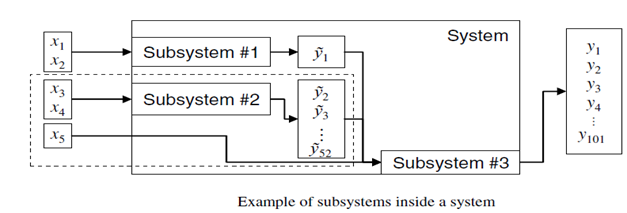Phaeses And Strategy
Introduction:
In sixsigma methods must answer some or all of these questions in the first phase of their system improvement or new system design projects.
Systems and Subsystems:
- A system is an entity with inputs and outputs.
- A “subsystem” is itself a system that is wholly contained in a more major system. The subsystem may share some inputs and outputs with its parent system. Figure shows three subsystems inside a system.
- The main motivation for the “define phase” is to identify specific subsystems and to focus attention on them.
- The main deliverable from the define phase of a project is often a so-called “charter,” defined in the next section.
- This charter is often expressed in terms of goals for subsystem outputs. For example, in relation to a chess game system, one strategy to increase one’s chance of success is to memorize recommended lists of responses to the first set of “opening” moves.
- The first opening set of moves constitutes only a fraction of the inputs needed for playing an entire game and rarely by itself guarantees victory. Yet, for a novice, focusing attention on the chess opening subsystem is often a useful strategy. Shows some output variables, Y1… Y52, from the subsystems that are not output variables for the whole system.
- Intermediate variablesas key output variables (KOVs) from subsystems that are inputs to another subsystem. Therefore, intermediate variables are not directly controllable by people in one subsystem but might be controllable by people in the context of a different subsystem.
- For example, scoring in chess is an intermediate variable which assigns points to pieces that are captured. From one phase of chess, one might have a high score but not necessarily win the game. However, points often are useful in predicting the outcome. Also, experts studying the endgame phase might assign combinations with specific point counts to different players. In general, winning or losing is generally the key output variable for the whole system.

Example (Lemonade Stand) Consider a system in which children make and sell lemonade. Define two subsystems, each with two inputs and outputs and one intermediate variable.
Answer: Figure shows the two subsystems: (1) Product Design and (2) Sales & Marketing. Inputs to the product design subsystem are: x1, percentage of sugar in cup of lemonade and x2, flavoring type (natural or artificial). An intermediate variable is the average of (1-10) taste ratings from family members, 1. The Sales & Marketing subsystem has as inputs the taste rating and the advertising effective monetary budget, x3. Key output variables from the Sales & Marketing subsystem include the profit, y1, and average customer satisfaction rating (1-10), y2.
